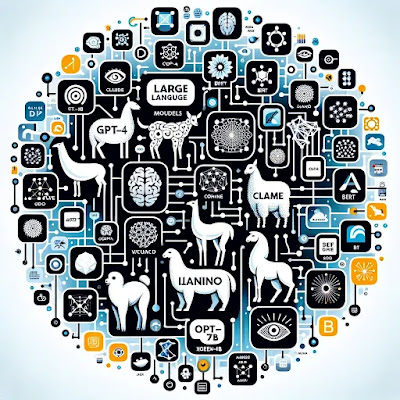In the rapidly evolving field of artificial intelligence, large language models (LLMs) stand at the forefront of innovation, driving advancements in natural language processing, understanding, and generation. The year 2024 has seen a proliferation of these models, each offering unique capabilities and applications. Below is an overview of some of the most prominent LLM projects that are shaping the future of AI.
- GPT-4 by OpenAI: A successor to the widely acclaimed GPT-3, GPT-4 further enhances the capabilities of its predecessors, offering unprecedented performance in complex reasoning, advanced coding, and proficiency in multiple academic exams. Its human-level performance in a variety of tasks sets a new benchmark in the field.
- Claude by Anthropic: Developed by a team that includes former OpenAI employees, Claude aims to build AI assistants that are helpful, honest, and harmless. It has demonstrated significant promise, outperforming other models in certain benchmark tests and offering the largest context window of 100k tokens for loading up to 75,000 words in a single window.
- Cohere: Founded by former Google Brain team members, Cohere focuses on solving generative AI use cases for enterprises. It offers a range of models, from small to large, praised for their accuracy and robustness in AI applications. Companies like Spotify and Jasper leverage Cohere’s technology to enhance their AI capabilities.
- Falcon by the Technology Innovation Institute (TII): Marked as the first open-source LLM on the list, Falcon stands out for its performance among open-source models. Available under the Apache 2.0 license, it facilitates commercial use and offers models trained on 40B and 7B parameters, catering to a variety of languages.
- LLaMA by Meta: After its models leaked online, Meta embraced open-source by officially releasing LLaMA models ranging from 7 billion to 65 billion parameters. These models have been pivotal in pushing forward open-source innovation, offering remarkable capabilities without the use of proprietary data.
- Guanaco-65B: An open-source LLM that shines for its performance, especially when compared to other models like ChatGPT (GPT-3.5) on benchmarks like the Vicuna benchmark. It demonstrates the potential of open-source models to deliver high-quality results efficiently.
- Vicuna: Another noteworthy open-source LLM, Vicuna is derived from LLaMA and has been fine-tuned using unique training data, showing impressive performance on various tests while being smaller in size compared to proprietary giants like GPT-4.
- BERT by Google: A foundational model that has significantly influenced subsequent LLM developments, BERT’s versatility and adaptability have made it a staple in the NLP community, inspiring variants like RoBERTa and DistilBERT.
- OPT-175B by Meta AI Research: An open-source model designed to capture the scale and performance of GPT-3 class models but with a significantly lower carbon footprint for training, OPT-175B showcases Meta’s commitment to sustainable AI development.
- XGen-7B by Salesforce: With its extended token processing capacity and diverse training dataset, XGen-7B advances the field by excelling in tasks requiring a deep understanding of longer narratives and instructional content.
- Amazon Q: A new entrant from Amazon, positioned as a generative AI product specifically designed for business use and trained on 17 years of AWS expertise, indicating a targeted approach to leveraging LLMs for enterprise applications.
Each of these projects exemplifies the diverse approaches and objectives within the realm of large language models, from open-source initiatives fostering innovation and accessibility to proprietary models pushing the boundaries of AI's capabilities. As these models continue to evolve, they are set to redefine the landscape of artificial intelligence, offering new possibilities for application and research in the years to come.

No comments:
Post a Comment